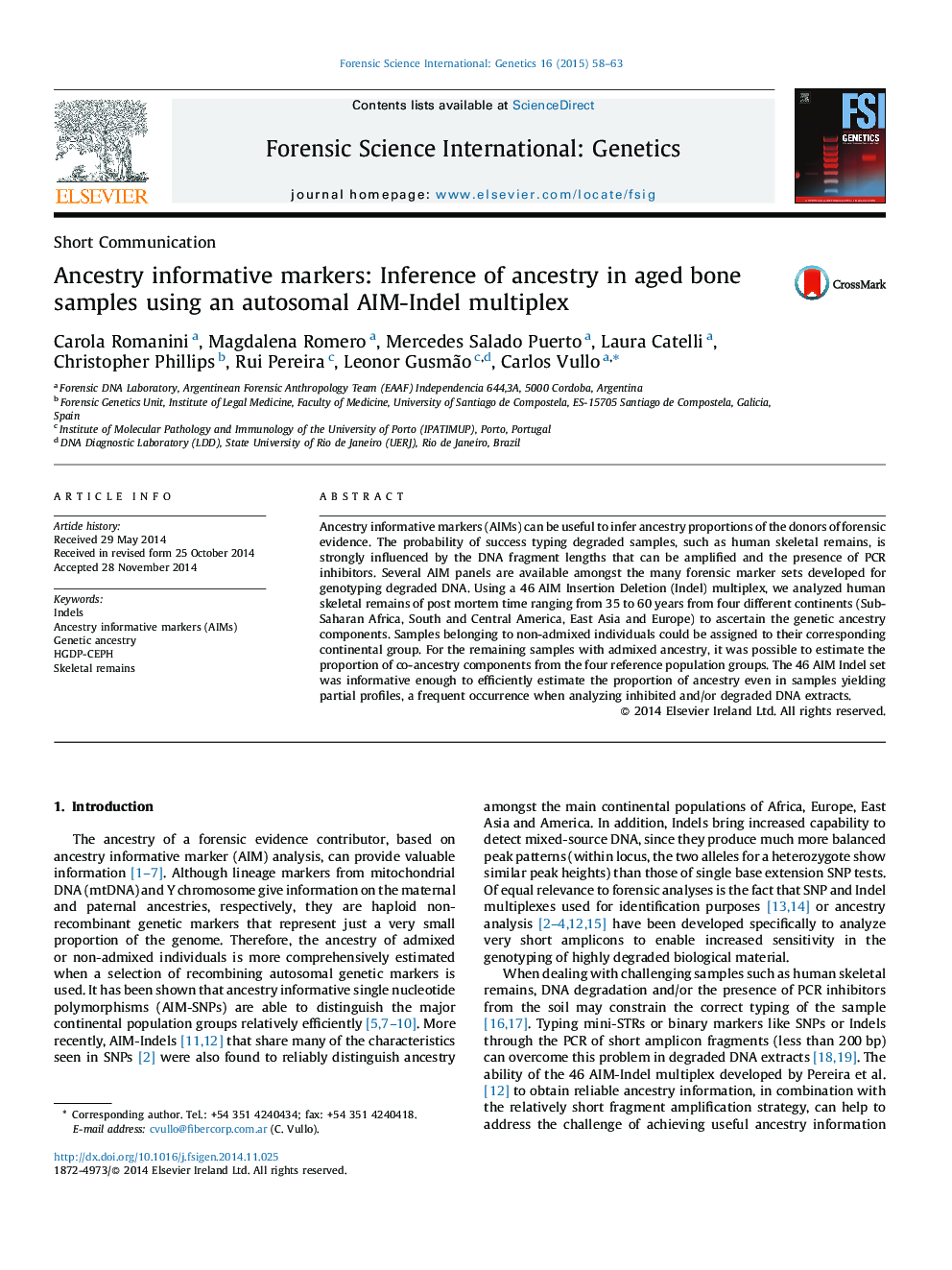| Article ID | Journal | Published Year | Pages | File Type |
|---|---|---|---|---|
| 6553808 | Forensic Science International: Genetics | 2015 | 6 Pages |
Abstract
Ancestry informative markers (AIMs) can be useful to infer ancestry proportions of the donors of forensic evidence. The probability of success typing degraded samples, such as human skeletal remains, is strongly influenced by the DNA fragment lengths that can be amplified and the presence of PCR inhibitors. Several AIM panels are available amongst the many forensic marker sets developed for genotyping degraded DNA. Using a 46 AIM Insertion Deletion (Indel) multiplex, we analyzed human skeletal remains of post mortem time ranging from 35 to 60 years from four different continents (Sub-Saharan Africa, South and Central America, East Asia and Europe) to ascertain the genetic ancestry components. Samples belonging to non-admixed individuals could be assigned to their corresponding continental group. For the remaining samples with admixed ancestry, it was possible to estimate the proportion of co-ancestry components from the four reference population groups. The 46 AIM Indel set was informative enough to efficiently estimate the proportion of ancestry even in samples yielding partial profiles, a frequent occurrence when analyzing inhibited and/or degraded DNA extracts.
Related Topics
Life Sciences
Biochemistry, Genetics and Molecular Biology
Genetics
Authors
Carola Romanini, Magdalena Romero, Mercedes Salado Puerto, Laura Catelli, Christopher Phillips, Rui Pereira, Leonor Gusmão, Carlos Vullo,
